In 2001 I stopped in Apalachicola while on my big cruise. I decided it was a neat place. I learned that the ACBS hosted a Antique and Wooden Boat Festival in April. In 2006 I went. I really enjoyed seeing the town and the boats. So Debbie suggested that I bring the Elver down and enter it in the show this year.
This entry describes the preparations, the trip down, sailing, the show, and finally the return home.
I recently bought a truck to replace the one that had a fire. Also this truck was more powerful and had working AC. These are all good things for hauling NSA long distances. But this truck did not have a ladder rack or any way to carry the mast and sprit for transport. So I had to build something that was quick and fairly robust.
The plans seem to suggest that one can just stow the mast and sprit in the cabin with the doors open. So why do this? Well, it rains sometimes and I don't want a wet interior. Frankly a good way to end a drought is to plan to trailer a boat on a specific day with the hatch open.
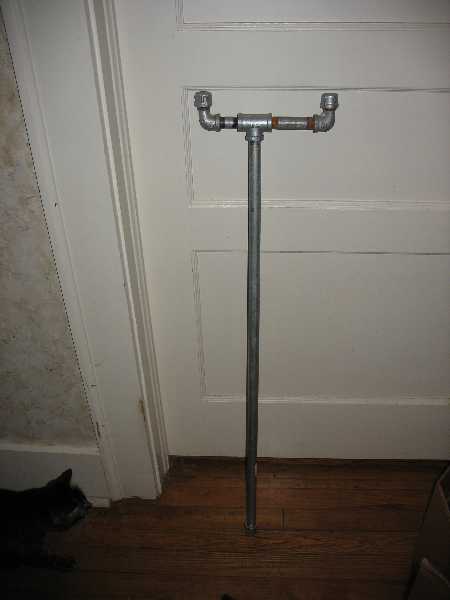
I started with galvanized pipe.
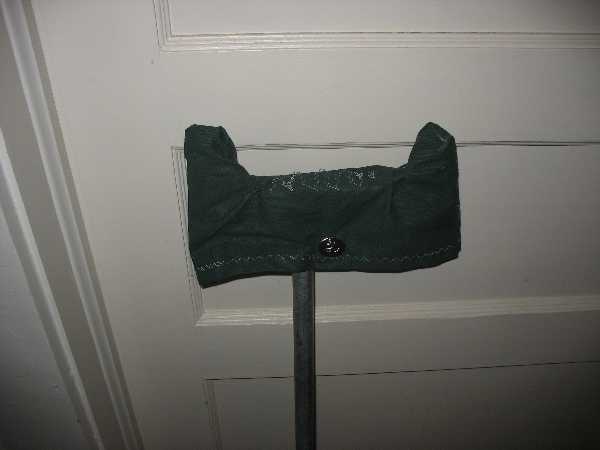
I sewed a cover that looks presentable. It cushions the mast and sprit to avoid scratches. It is also removeable for washing.
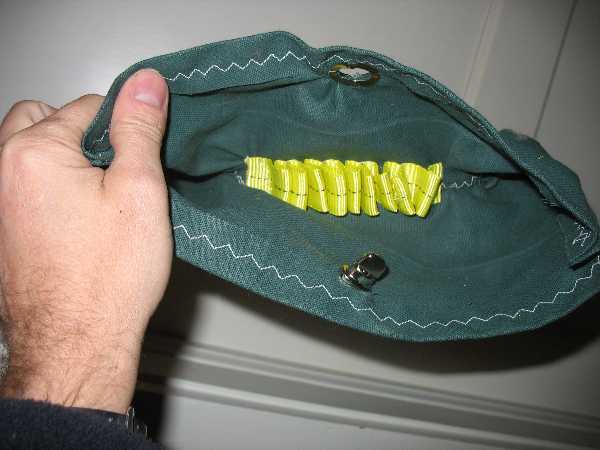
I used the left over strips from the battery straps for padding. This dries out quickly so it doesn't mold.
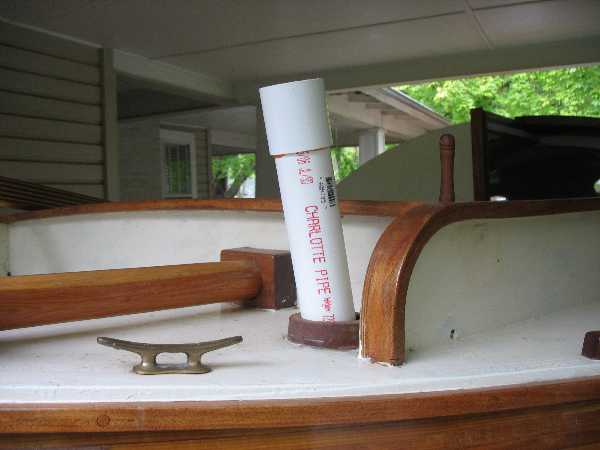
I put PVC pipes in the mast holes so they fit snugly and don't rattle. The constant rattle would otherwise beat up the sides of the holes. I placed the pipes in here and foamed them in place. Also the pipes keep rain from getting in the boat.
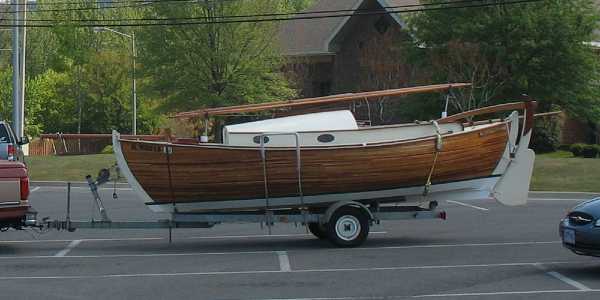
The mast and sprit stow nicely on these two.
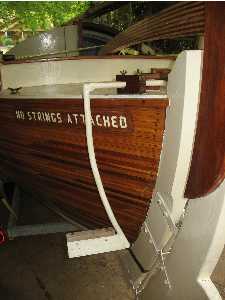
I moved this mount toward the stern as far as possible and readjusted its dimensions. I also added wood to the bottom to make it wider so the motor would clamp on ok.
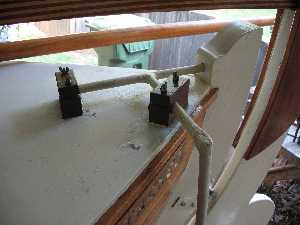
These two blocks and the stern post hold the mount in place. I avoid spoiling the wood topsides this way.
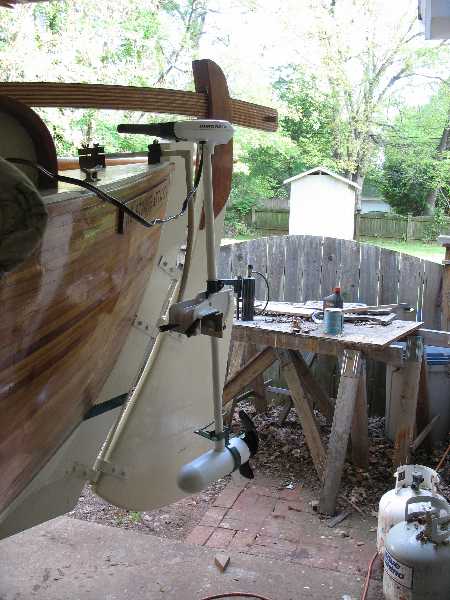
This is a Minn Kota Riptide 80 designed for salt water use. It is rated to deliver up to 80 lbs of thrust. The green thing on the body of the motor is designed to keep the propeller from striking the rudder.
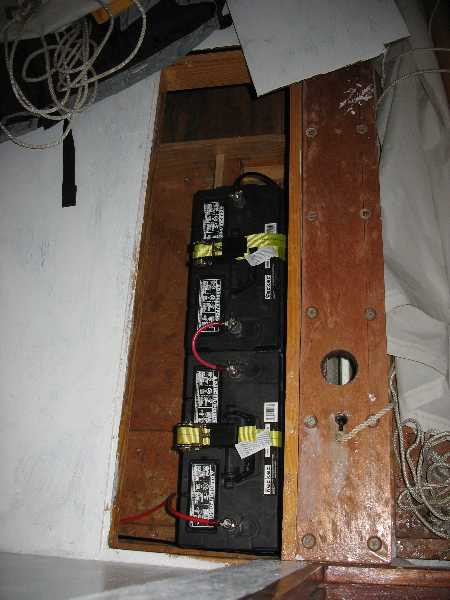
Here is a set of 2 group 31 Werker brand batteries. They kept the motor going for a good two hours at settings between 50 and 100 percent of power. It should be noted that batteries liberate hydrogen gas when being recharged. Hydrogen can be explosive even as low as 4% concentration by volume. I either take the batteries out or keep both hatches open while charging. Also I use a 3 stage charger which minimizes the evolution of hydrogen. The batteries also serve as good ballast in this position. Note that they are securely strapped in so they won't go anywhere even in the unlikely event the boat becomes capsized.